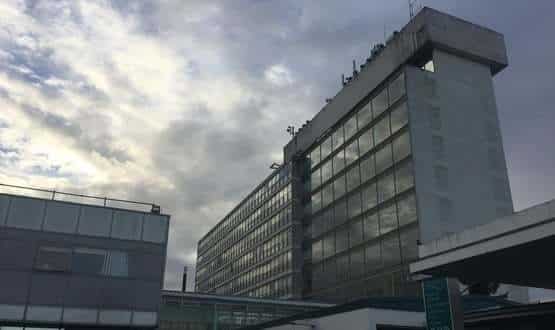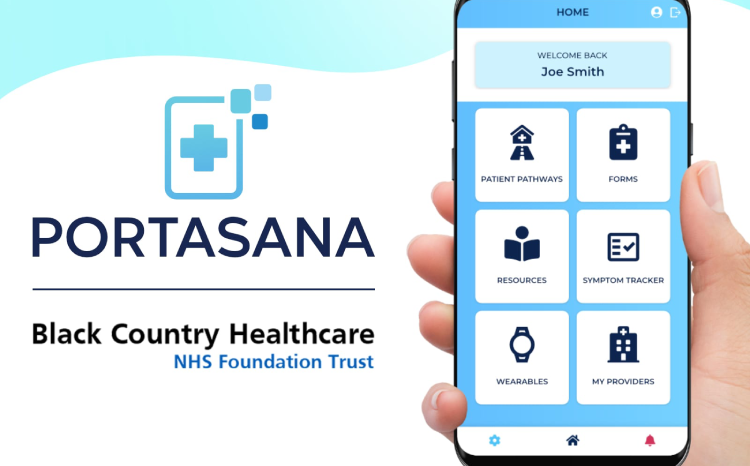Site visit: Hillingdon has an app for that
- 1 December 2016

Shane Degaris points out a tired set of buildings near the main entrance to Hillingdon Hospital; structures, he says, that date back to the Second World War.
The hutted annex was built as a temporary solution to deal with war casualties, and no one thought it would standing 60 years later.
However, as chief executive, Degaris says he spends a lot of his budget patching up the trust’s ageing estate. It doesn’t leave much left over for technology.
“If I could, I would invest more and more quickly – but my investment is limited by the state of the buildings. I’m surprised we have got as far as we have on technology,” he says.
Still, he adds, there are benefits to moving incrementally. “I have been through many EPR implementations in other roles.
“There was radical focus on D-day and moving up to D-day. But not much attention was given past the next week,” he says. “We can make changes here by taking baby steps; and make sure we get them right.”
The best of breed record
Instead of big bang digital transformation, Hillingdon is pulling together the digital assets it has and leaning heavily on its strong in-house IT.
The result is the Hillingdon Health Record, an app that provides a clinical portal into the trust and its health partners’ clinical systems, through mobile, tablet and desktop.
The record went live May 2015 with access to the trust’s Silverlink patient administration system and some basic patient activity. Since then it has been gone through eight versions.
The record now pulls in 40 different systems, using 70 different interfaces through the trust’s medical interoperability gateway.
That includes the PAS, pathology and radiology requests and results, electronic documents across on many wards including ophthalmology, cardiology, maternity and discharge summaries. It can also be used to create, as well as store, documents to send to GPs and social care organisations.
While it doesn’t provide some interactive functionality of full EPR, such as clinical noting, it has been far cheaper to deploy.
It is also expected to cost just £630,000 over five years, including the development platform and licensing, training, infrastructure, mobile devices and developer resources. A full EPR, of course, can run into millions (sometime tens of millions).
The numbers
The record is now available to 1,450 of the trust’s 2000 staff and is being used regularly, although most are accessing from a desktop rather than a tablet, of which there are only 200.
One of the biggest changes has been in the trust’s interactions with GPs, with traffic in electronical documents increasing dramatically.
The trust now send half a million electronic documents to GPs a year, and every month trust staff request to 600 GP records through the app.
Hillingdon claims this is the highest rate in the country, and compares it to about 80 requests a month before the app was rolled-out.
Overall, more than 8,000 documents are viewed through the record a month, along with another 50,000 transactions from viewing patient history to creating outpatient letters.
The team
The record has been developed on CommonTime, using its Rapid Mobile Application Development platform, mDesign, a set of tools that are used to make enterprise software for everything from railways to construction.
Building the record, the user interface, and connecting it to the hospital systems was engineered by the trust’s three-person in-house development and integration team, which has since expanded to four.
Matthew Kybert heads the team and is evidently proud of the what they have achieved with few resources.
“We are a trust that can’t afford a Cerner or an Epic,” he says. “You can spend $7.4 million to achieve something similar to what we have here.
“Our strategy is a best of breed approach. We are not looking to replace functionality that exist, we are looking to enhance it and make it available to everyone.”
Demanding clinicians
Another key component in making the record work is the trust’s clinicians, who champion the record to their colleagues and push Kybert’s team for improvement.
Because the system is updated so regularly, clinicians can request a feature and see it within weeks. “We have to be quite agile with our development,” Kybert says.
Dr Paresh Mistry, an acute medical unit consultant, says the record was a “breath of fresh air”. “Often, we have to make decision based on what we know at the time, and pulling [paper] notes can be difficult, even from last week,” he says. “With the electronic system you can do it instantly.”
Dr Bob Grover, a gastroenterology consultant, is similarly keen: “It is particularly useful for junior staff at 2am in the morning [to get the electronic background history],” he says. “This is the way that juniors can easier get access to critical information.”
Trauma nurse Sheila Bacon says the presentation of the record is what makes it so valuable. “It’s a slick chronology rather than a stack of notes,” she says.
This is particularly important in acute admission, where staff don’t have time to wade through masses of paper. “The information I see in there has stopped people going into theatre,” Bacon says.
The (nearly) one-stop shop
While the record provides a window into much of what is going on in the hospital, there are still key pieces of information missing.
The picture archiving and communications system has not been integrated into the record yet, something several clinicians told Digital Health News would help enormously.
And while letters, such e-discharges, are in the system, the clinical notes themselves are still on paper (and stored off-site, since Hillingdon Hospital’s basement ran out of space about two years ago).
As the record expands some of these gaps should be closed. The trust is planning to scan a lot of historical documents next year, focusing on the past few years of activity. E-referrals and e-prescribing are also on the schedule for next year.
Kybert says the record should eventually grow to represent a more traditional EPR, but homegrown with clinical input baked in from the start. “We are able to achieve a lot more than some bigger systems.”
One flower blooms
Among NHS leaders, “scalable tech” is an increasingly popular phrase, closely followed by “digital blueprint”.
Nobody is proposing a return to the top-down (largely unsuccessful) days of the National Programme for IT, but there is also lot a talk of hospitals trying to work with too many homegrown systems that are too bespoke to be easily maintained or transferred elsewhere.
The global digital exemplar programme has emphasised that the centre is funding trusts that can come up with digital solutions that can be exported with minimal modification around the NHS.
Charles Yeomanson, Hillingdon’s ICT director, says the area had come along way when it came to scaling solutions locally in the two years, largely through greater information sharing.
He hopes the Hillingdon Care Record will become increasingly central to that vision not just for the trust but for GPs and social care organisation across the area.
But he acknowledges that what has made the record work locally – its quick tailoring to specific clinical needs – also makes it difficult to export. “To take a system and just transplant it into another trust is very difficult.”
Kybert says the responsiveness of system has generated plenty of enthusiasm among clinicians at other trusts, but the Hillingdon way is not for everyone.
“It would work for another medium acute trust like ourselves, that has the skills in-house. If you haven’t got those skills, it would be hard,” he acknowledges.




